Southern Fried Chicken — Cornbread and Buttermilk
Southern Fried Chicken! By all means, yes! Cornbread and buttermilk! Eew!
Fried chicken, be it Southern, Chinese crispy, Thai, Korean or wherever, it’s a universal enjoyment. Like Sara Lee, “Everybody doesn’t like something, but nobody doesn’t like fried chicken.” Cornbread and buttermilk aficionados are a cult unto themselves. No teetering on this fence - you’re either in or out. My mother was definitely in, and eventually I was in too.
My family wasn’t “poor white trash” in the pejorative sense, but you wouldn’t know it from the way we ate. With both parents growing up with farm experience and then enduring the Great Depression, stretching pennies on food became a lifelong habit for them. To look in our pantry, you would have thought we owned controlling interest in Spam. It was only later in life that I learned that Spam isn’t the mystery meat we imagined. Now scrapple, that’s another matter. The first time I tasted it, I asked, “What’s in it?” “Consider the first five letters of its name,” I was told. It was tasty like Spam but the visions of pork cheeks, pork skin, pork heart, pork liver, pork tongue—even pork brains—have tainted my desire.
Fried chicken in our home was special and most often served as part of a large Sunday lunch and always appeared at larger family gatherings. Of course, there would be mashed potatoes—you had to have something to go under that delicious cream gravy. If it was summer there would be plenty of sliced tomatoes and cucumbers. Squash—almost every southern table had squash. Squash in season was more plentiful than ants at a picnic. When there was more harvest than one household could handle, people would leave anonymous brown paper bags of orphan squash on unsuspecting neighbors’ steps. And greens—copious bowls of greens as we called collard, turnip, mustard or beet greens—were stewed into submission with bacon aplenty. We spiced up all greens by slathering them with a hot vinegar from a jar brimming with small Tabasco peppers and garlic. Evangeline was the name on the bottle.
As I have been gifted with the status of “Honorary Asian” among Vic’s Asian-American Journalist friends, Vic has assumed the role of “Honorary Southerner” at home as designated master of the collard greens. Trust me, he knows what he’s doing when it comes to collards, bacon and long, slooooooooowwwww cooking. You can see his efforts below on the plate. He makes a mean chicken-fried steak as well.
This nostalgic flashback to comfort food from my youth was motivated by an essay I wrote for Anthony Bourdain’s Medium Raw Challenge Contest. “What does it mean to cook food well?” was the prompt to stir our literary imaginations.
The Food of Love
Love yourself, love others, love what you do and don’t worry, all you do will be done well.
A young boy, about 10 and hungry to learn, gazes admiringly at his mother as she shakes legs, thighs, wings, breasts, even the back, liver and gizzard in a heavy brown shopping bag holding well-seasoned flour. He observes her carefully removing each snow-white piece from the bag and cautiously lowering them into a cast-iron skillet filled with hot fat. She continues until the pan is full. The sizzling fat erupts into action, transforming each piece into crispy perfection. He notices how carefully she concentrates on each step as she turns them over and over until each morsel is a perfect golden-brown. After each piece is removed and set aside to drain, she pours off most of the fat, sprinkles flour from her hand and constantly stirs until it is just right before adding milk. The now-gluey flour drinks up the milk like a sponge and quickly becomes velvety cream gravy, speckled with crispy brown bits of orphaned breading. His world will never be the same. His mother, her love and lovely fried chicken with cream gravy are forever bound together.
Of course, there was more than chicken. There was her pressure cooker pot roast, chocolate meringue pie, fried cornbread and black-eyed peas, her cakes and jams, fried pies and homemade peach ice cream. So much love!
Tracing my passion for food and cooking is easy. Passing it on and lavishing it on others is easy too — as long as I remain consciously connected to the love and joy of doing it well. Suspended timelessly in each advancing moment.
“How small do I want to mince the celery, carrots or dill?”
“I am grateful to all who handled my beautiful salmon, from the fish itself and the one who caught it, all the way to the fishmonger who displayed it on a glistening bed of ice and carefully packaged it for its voyage to my kitchen.”
My last memory of my mother and food was, fittingly, just between the two of us. She is confined to bed, the cancer that will end her life is slowly closing in on its grim final act. The narcotics that offer relief from the pain do their job, but her light and life still glow with love and gratitude. Eating is not easy. That particular evening I ask if she would like some cornbread and buttermilk. Her eyes light up with anticipation, like a child who’s just been offered an ice cream cone. “More than anything else,” she says softly. I look on her face as she surrenders to one of her favorite indulgences. That vision of pure sublimity will follow me forever.
The example set by my mother has served me well in life, especially in cooking and setting a generous, welcoming table.
Love is a gift to be given and received in a never-ending cycle, and so it is with food.
Evie Ruth Badgett Price lived just 7 days shy of a full 84 years, all the while nurturing my sisters and me, nine grandchildren and numerous great-grandchildren by setting an example of unconditional love. That love she freely dispensed to everyone was evident when we saw the overflowing crowd of friends and relatives paying their last respects at the funeral chapel. My sisters, Wanda and Marlene, agree with me that we are fortunate to have been born into this family and are proud to have called her Mother.
Her love of cornbread and buttermilk was a private affair and we often saw her enjoying it in quiet solitude at the end of a busy Sunday. As much as I tried in my youth, I couldn’t get past the sour buttermilk. However, I eventually acquired a taste for it after a couple of determined tastings. The cornbread I make is made with buttermilk and honey so there already is a sweet/sourness to the flavor. It’s a Mollie Katzen recipe from Moosewood Cookbook. It has never let me down even when I go wild by adding corn kernels, jalapeños and cheese. However, now that I have discovered The Cornbread Gospels by Crescent Dragonwagon, my cornbread of choice will, most likely, become an ever changing cast of many passing through swinging doors.
Evie’s Cornbread and Buttermilk Refresher
- Cornbread, leftover
- Buttermilk
- 1 tall glass
- 1 iced-tea spoon
- Fill your glass with cornbread broken into bite-size pieces.
- Fill the glass with fresh, cold buttermilk.
Stir gently and enjoy pulling up pieces of buttermilk-soaked cornbread and savor.
Mother’s Fried Chicken and Cream Gravy
- 1 frying chicken, cut into pieces (I cut each breast half into two pieces and relegate the back and neck to stock)
- 1 quart (1 lt.) buttermilk
- Salt and fresh ground pepper
- 1 teaspoon (5 ml.) Tabasco® Sauce or a similar sauce (optional)
- 3 cups (720 ml.) all-purpose flour seasoned with salt and pepper to taste
- 2-3 tablespoons (30-45 ml.) additional flour for gravy
- Oil for frying (we use peanut oil)
- Milk or cream for the gravy
- Place chicken pieces in a large resealable plastic bag, pour buttermilk over until covered. You will have some leftover. Season to taste with salt, pepper and Tabasco.
- Squeeze as much air as possible out of the bag and seal. Massage the bag to distribute the buttermilk and seasonings.
- Place the bag in a large bowl and refrigerate overnight or at least all day (the bowl is precautionary for me in case any sharp bones pierce the bag and soil the refrigerator).
- Place the 3 cups of seasoned all-purpose flour in a large (2 gallon or 7.5 lt) resealable plastic bag, or use a heavy brown shopping bag like my mother did.
- Place 2-4 pieces of chicken in the bag, close or seal and shake until well coated with the seasoned flour.
- Place the breaded chicken on a platter and continue with the rest of the pieces.
- Add oil or shortening to a large Dutch oven to come up about 1½ inches (3.8 cm.).
- Using a candy or deep frying thermometer, heat the oil or shortening to 350 °F (176 °C).
- Gently add 3-4 pieces of chicken to the pan (do not crowd them).
- When the bottom of each piece reaches the desired color, turn and fry the other side.
- Remove to a foil-lined pan with a cooling rack or multiple layers of paper towels.
- Continue until all pieces of chicken are done. (You can hold the chicken in a warm oven until ready to serve.)
For the cream gravy:
I have never used a recipe when cooking this. I always use my eyes as a guide while adjusting it to the final consistency.
- Carefully ladle or pour off most of the fat in your pan, leaving as many of the brown bits from the chicken as you can. There should be about 2-3 tablespoons (30-45 ml.) of oil left.
- Add the additional flour while whisking constantly to avoid any lumps. Whisk for a couple of minutes to allow the flour to cook.
- When the flour and fat come together, begin adding milk while still whisking constantly until it becomes the thickness you desire.
- Remember that when it cools slightly, it will become thicker. You can adjust the thickness by whisking in more milk or flour.
- Remove from heat to a heated bowl.
Bon appétit, y’all!
— Charles
About the Author (Author Profile)
Music, food and photography are at the center of Charles’ life. He performed with the Dallas Symphony, Dallas Opera and was assistant principal bassoonist with the Fort Worth Symphony for more than 20 years. When Charles and Victor moved to Baltimore, Charles created Lone Star Personal Chef and Catering Service and taught cooking classes at Williams-Sonoma. Now in Salem, Charles is a Realtor with Coldwell Banker Mountain West Real Estate, taught cooking classes for children at the A.C. Gilbert Discovery Village, and owns and operates Charles Price Photography. Charles and Vic enjoy entertaining and frequently host dinners as fundraisers for local non-profits and charities






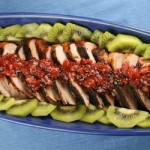
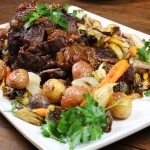
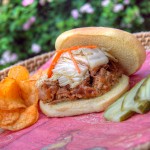
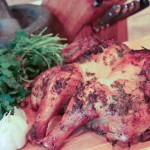

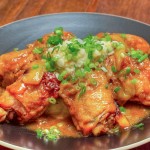
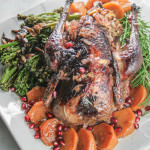
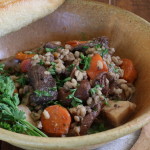
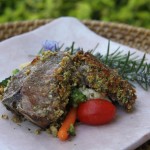
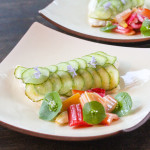
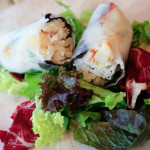
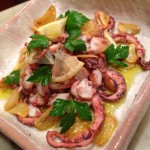

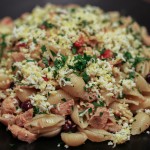
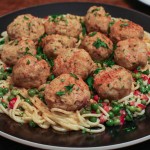
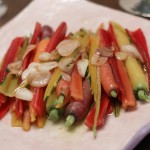
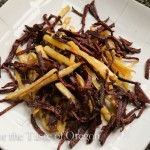
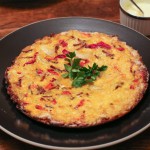
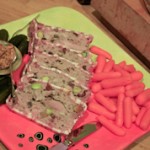
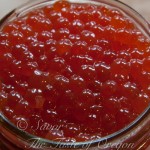
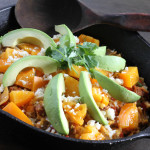
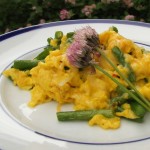
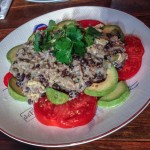
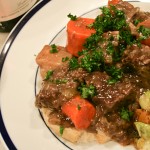
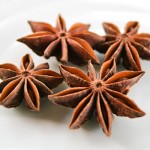
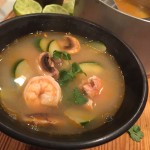
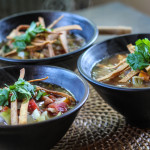
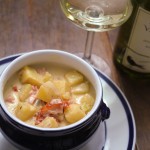
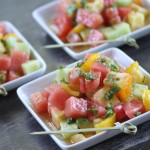

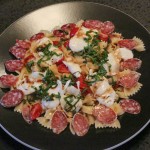
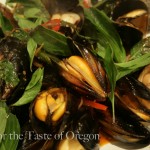
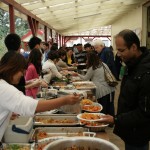
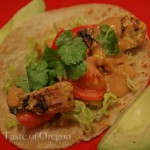
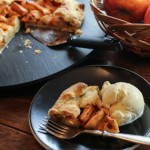
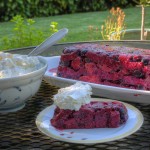
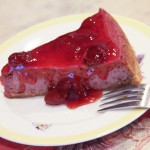
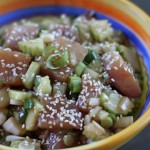
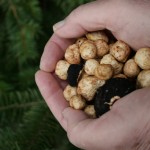
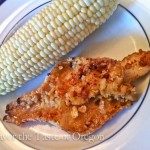



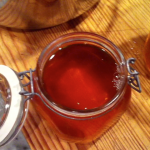











THanks again for another memory of our Mother.
My friend Pantera, a life-long Brooklynite, is also a master of the art of perfect fried chicken. Two tweaky things I learned from her:
1. The last time she fried chicken in my presence, her huge old cast iron skillet was wearing a tall paper collar she’d purchased from an Asian market- apparently Japanese-made. It contains the oil spatter!
2. She noted that for large batches of fried chicken, the oil begins to cook differently as more chicken fat is rendered. I assume the issue is that the smoke point is lowered. She actually removed some of the oil and replenished with more of her preferred oil partway through a particularly large batch (i.e. multiple chickens). She also has a preference for which chicken parts are cooked first. I’ll double-check on that point. FABULOUS post…I am now ridiculously hungry! -Melissa
Dear Crankybaker - That’s such great information. The Dutch oven we use is Le Creuset which is enameled cast iron and has high walls to contain some of the spatters. I had never pondered the oil fact but it makes such good sense. I’m anxious to hear about the order Pantera fries her chickens.
Believe it or not I’ve never made fried chicken…Need to try it now 🙂 Made creamy chicken and noodles for dinner tonight, but this sounds so much better!